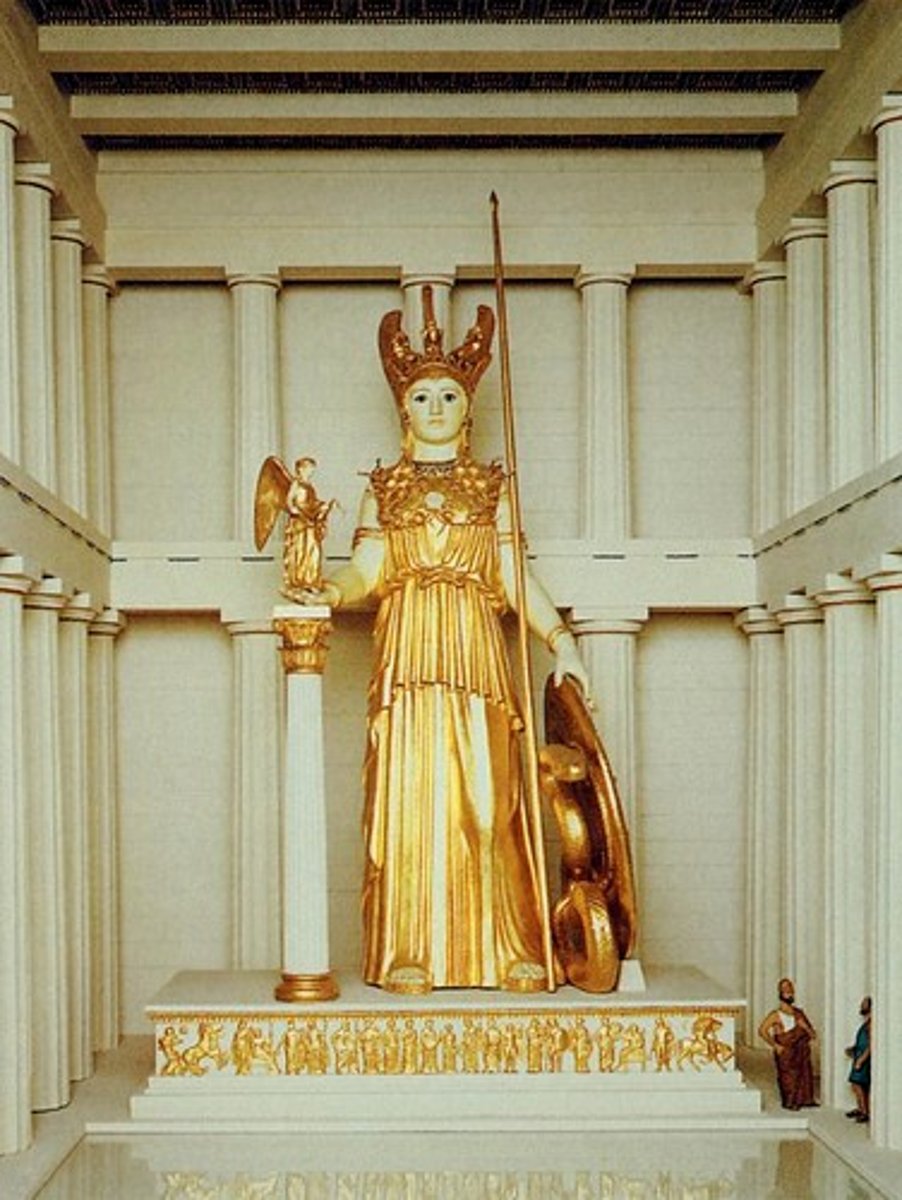Ancient Mediterranean Ancient Greece
1/9
There's no tags or description
Looks like no tags are added yet.
Name | Mastery | Learn | Test | Matching | Spaced |
|---|
No study sessions yet.
10 Terms
Acropolis
Greek for "high city". The chief temples of the city were located here.
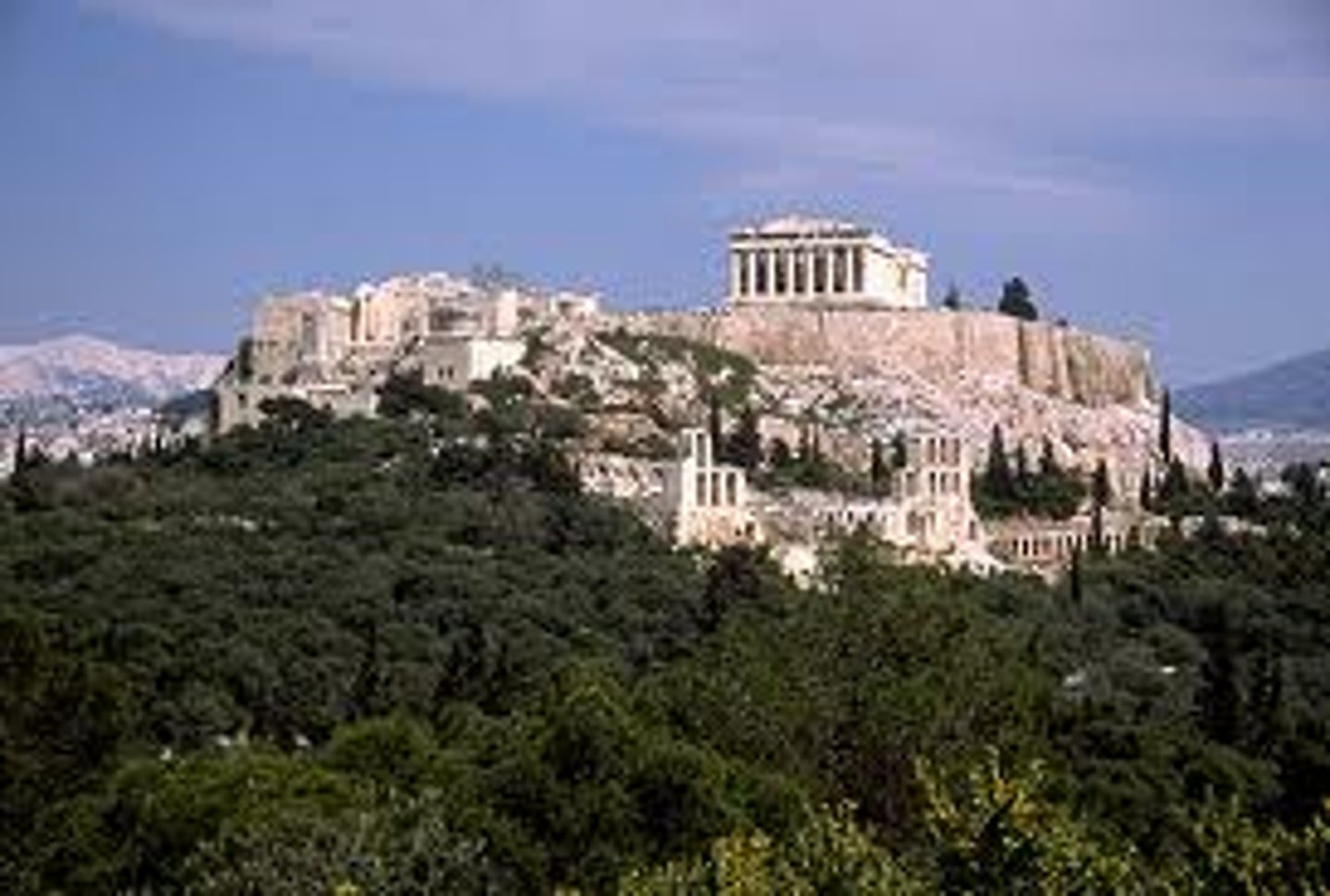
Agora
a public open space used for assemblies and markets in Greece
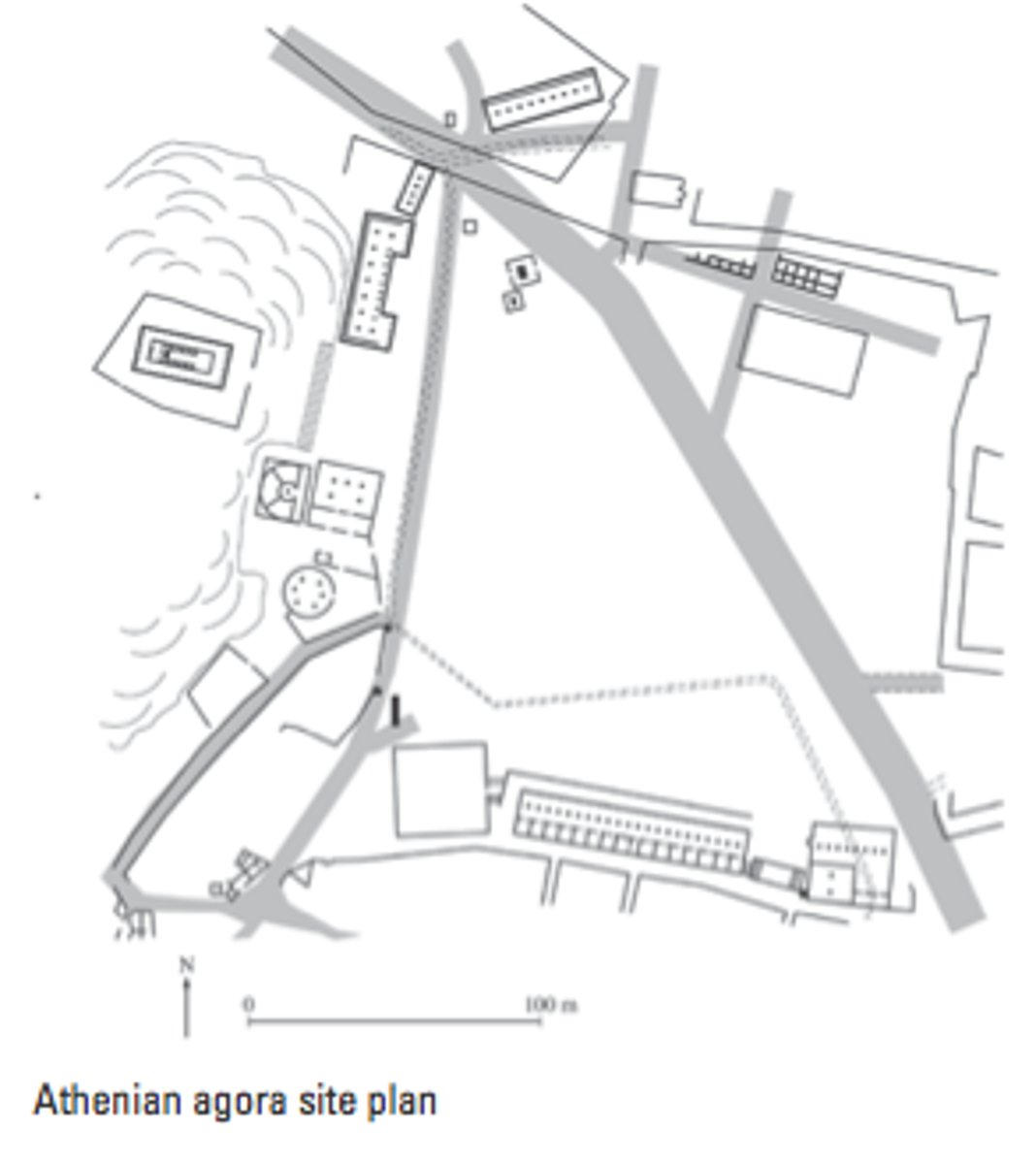
Archaic smile
The smile that appears on all Archaic Greek statues from about 570 to 480 BCE. The smile is the Archaic sculptor's way of indicating that the person portrayed is alive.

Black-figure painting technique
In early Greek pottery, the silhouetting of dark figures against a light background of natural, reddish clay, with linear details incised through the silhouettes.

Canon of Polykleitos
The renowned Greek sculptor Polykleitos designed a sculptural work as a demonstration of his written treatise, entitled the "Kanon" (or Canon, translated as "measure" or "rule"), exemplifying what he considered to be the perfectly harmonious and balanced proportions of the human body in the sculpted form.
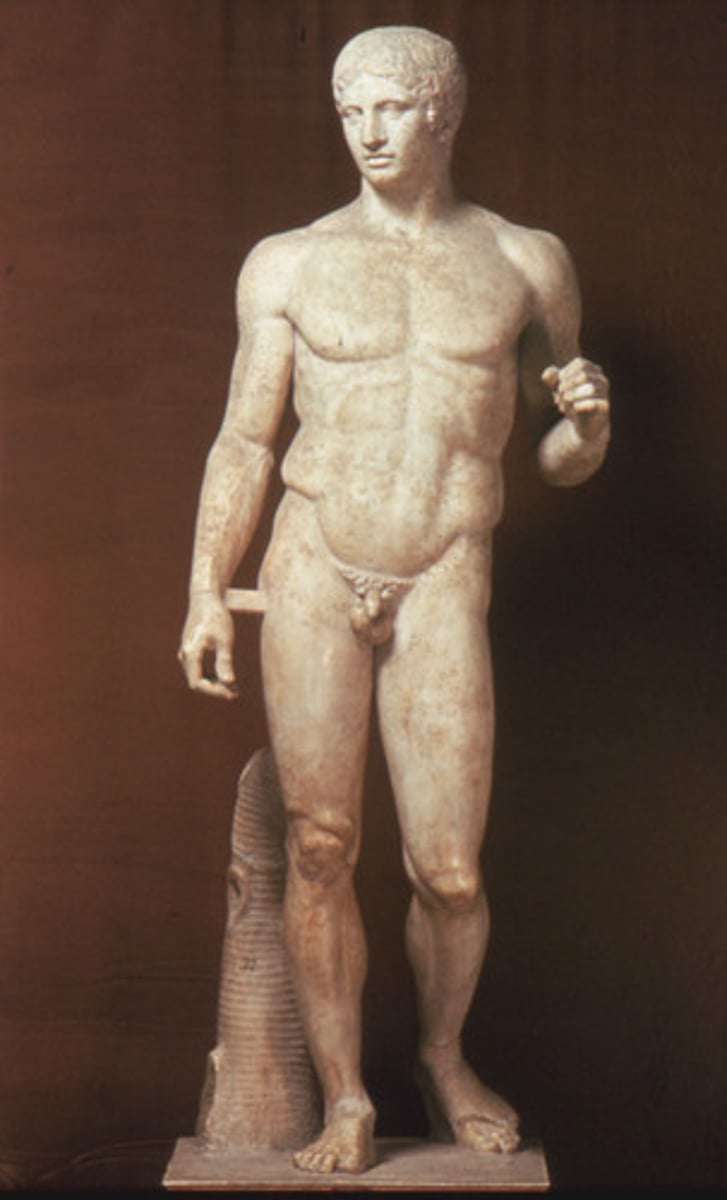
Caryatids
a stone carving of a draped female figure, used as a pillar to support the entablature of a Greek or Greek-style building.

cella
The chamber at the center of an ancient temple; in a classical temple, the room (Greek, naos) in which the cult statue usually stood.
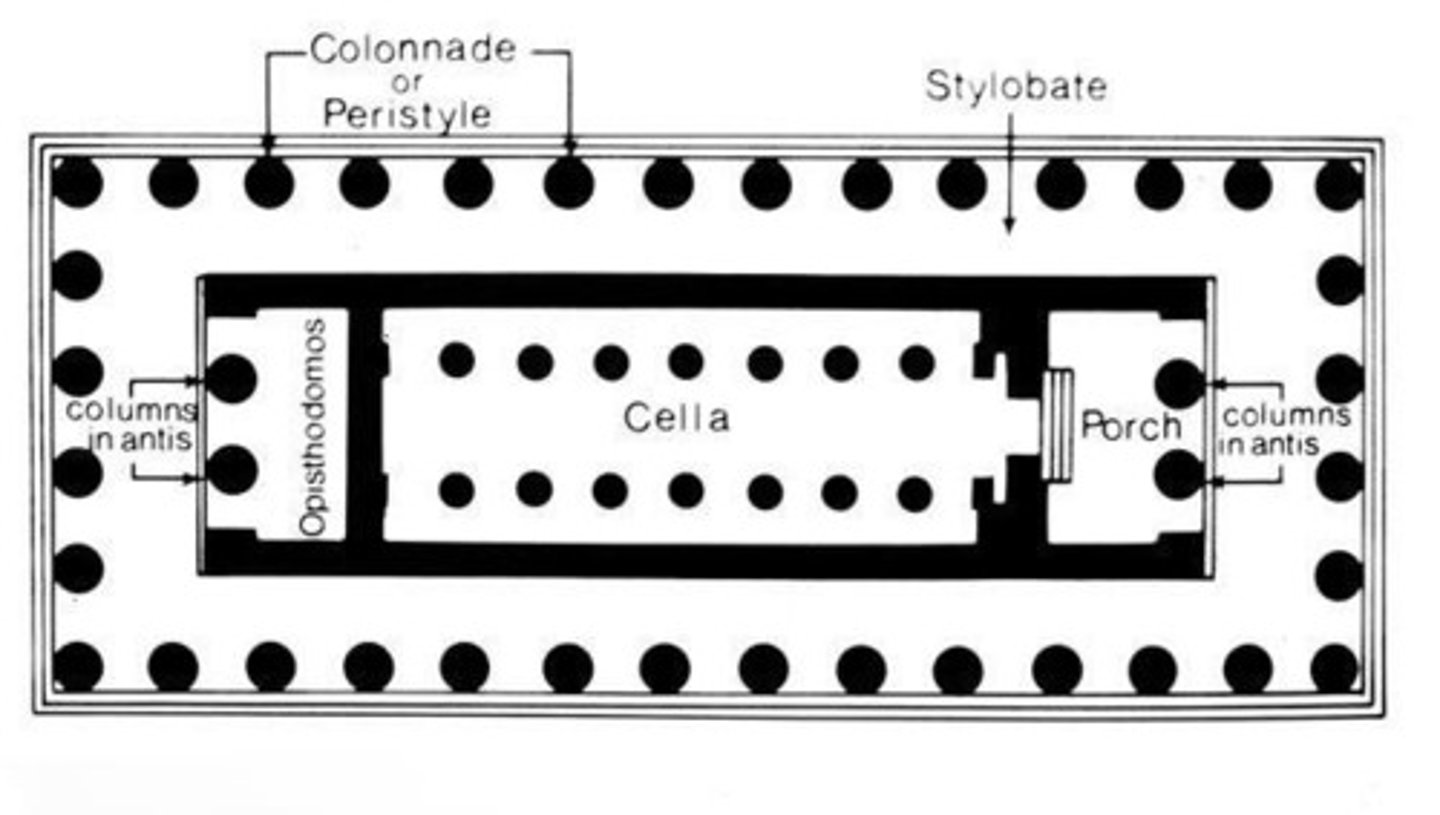
cire perdue (lost wax)
a bronze-casting method in which a figure is modeled in wax and covered with clay; the whole is fired, melting away the wax and hardening the clay, which then becomes a mold for molten metal
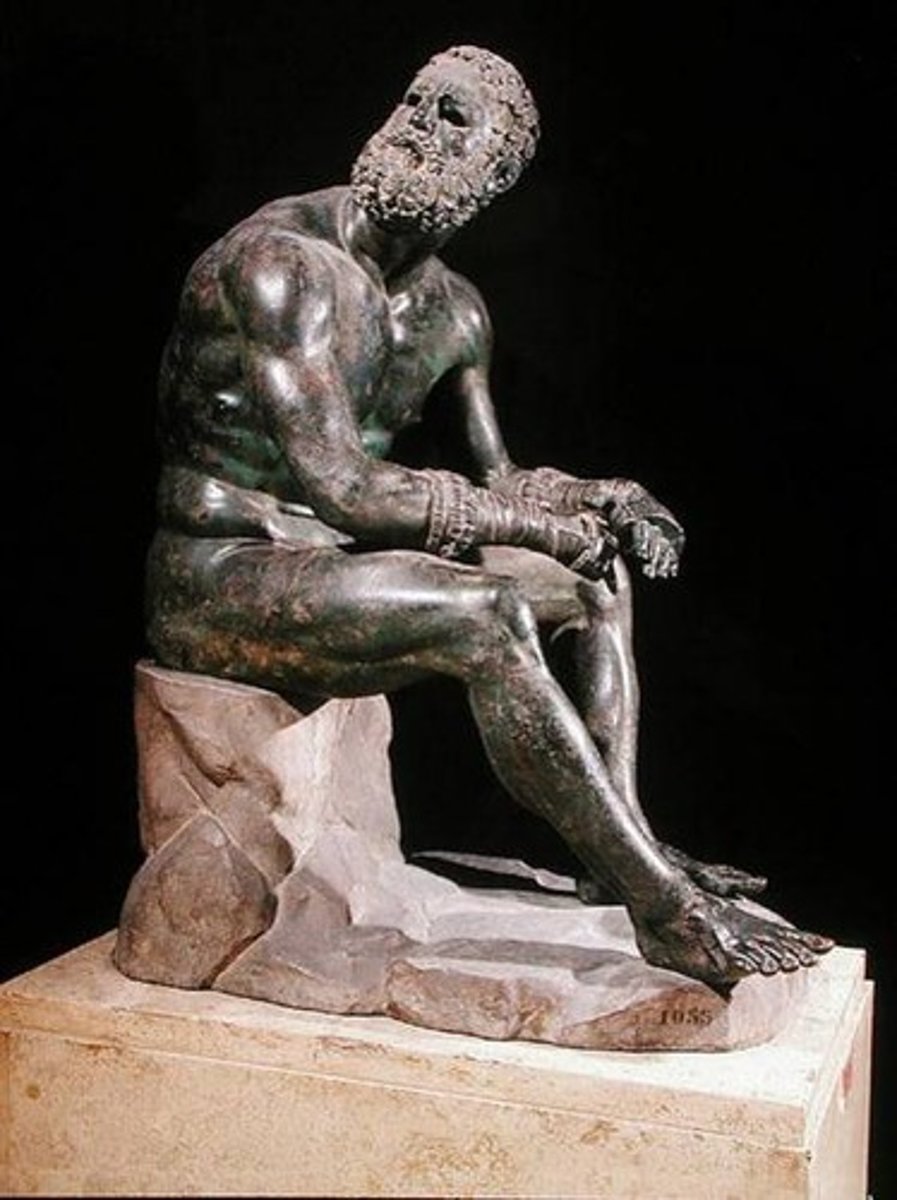
Corinthian capital
The most ornate of the three main orders of classical Greek architecture, characterized by a slender fluted column having an ornate flared capital decorated with acanthus leaves.
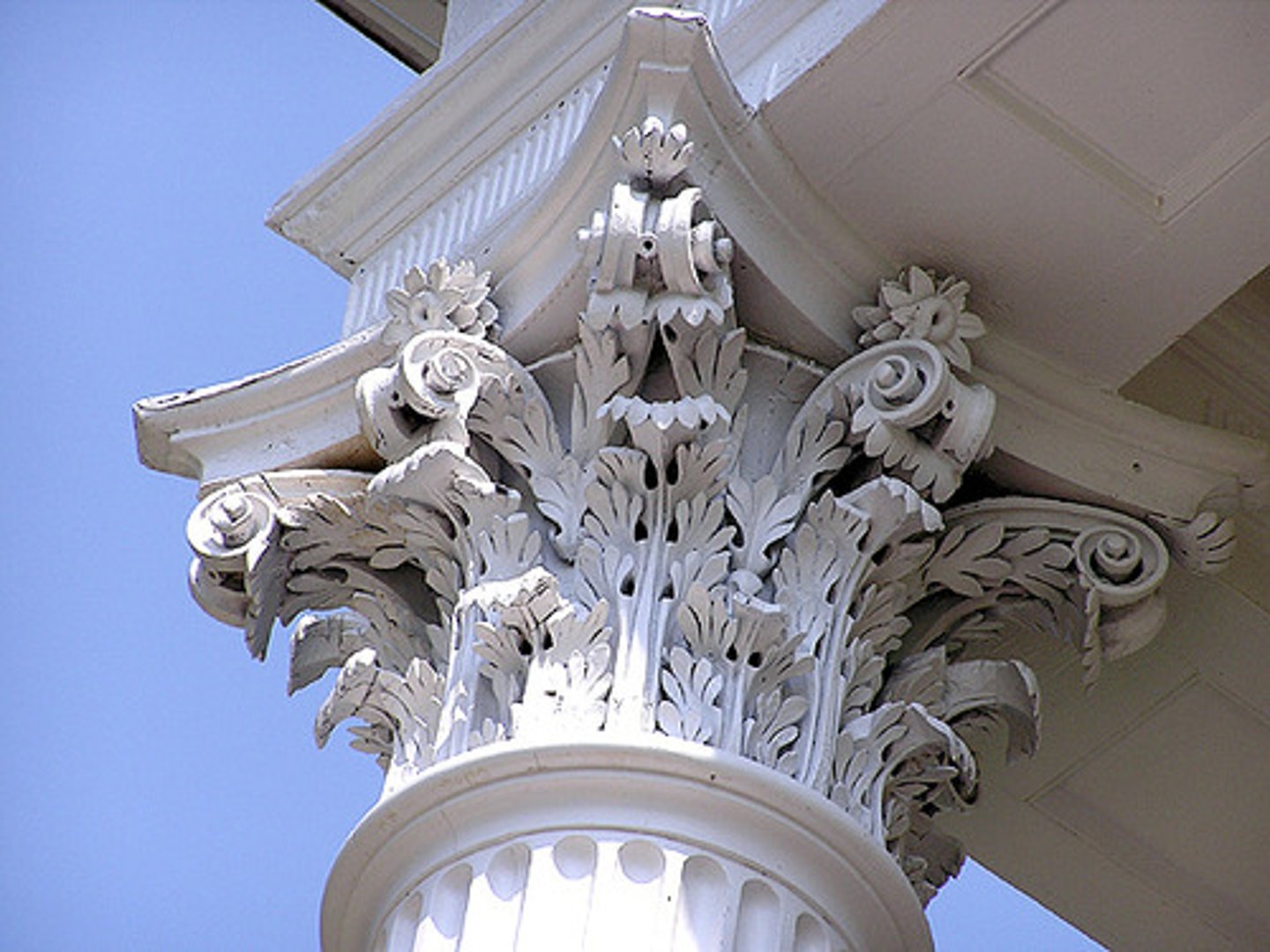
Chryselephantine sculpture
-type of figural sculpture in which the flesh was made of ivory and gold
-Greek: chrysós means gold and elephántinos means ivory;
-Phidias carved a chryselephantine cult statue of Athena for the Parthenon
